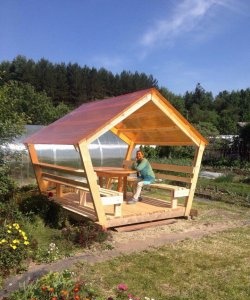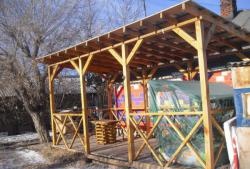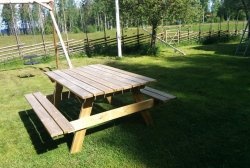
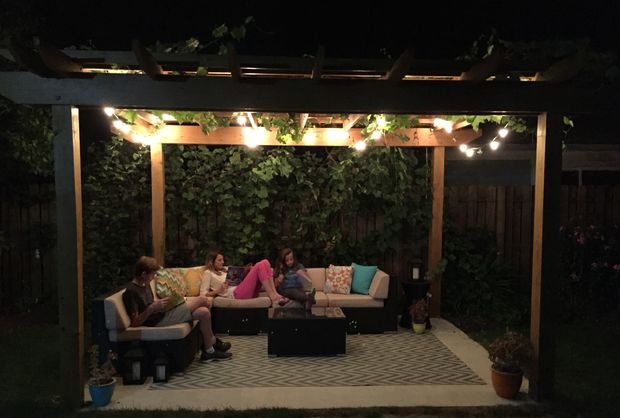
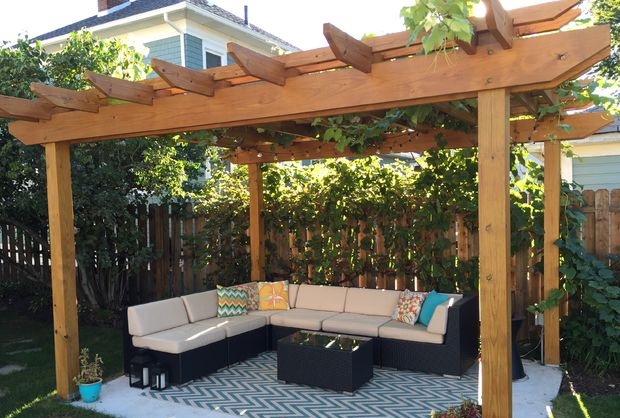
For the past ten years, all my active life has been centered around a large wooden play structure in the backyard. The children really liked this awkward structure as a pirate ship, an obstacle course, a refuge from persecution. However, as he grew older, they were less and less seen on his warped wooden stairs. And one day my wife and I realized that the children had grown up and needed something new. We were secretly happy about this.
Now we could take control of our backyard again and turn it into a place where the whole family could hang out. We imagined a place where we could relax on a comfortable street furniture, spend time with friends, share a meal, or maybe watch a movie. After a little research online, we settled on a design for one gazebo that could transform our yard into the space we've been dreaming of.
After two months of designing, building and decorating, we're spending more time on our back patio than ever before.
Preparation of materials

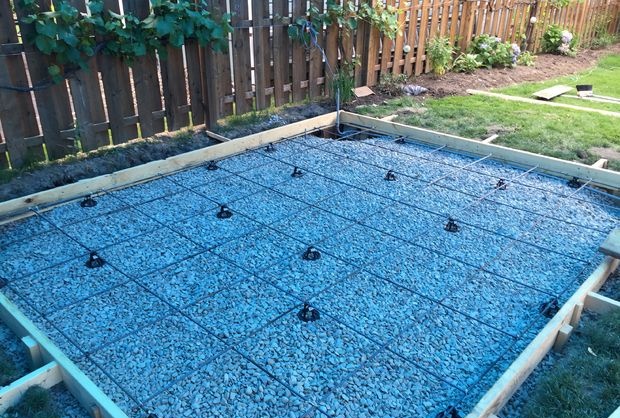
Materials for the gazebo (for dimensions, use the drawing in the image below)
- pillars 15 x 15 cm made of impregnated wood,
- boards 5 x 25 cm made of treated wood,
- boards 5 x 15 cm made of impregnated wood,
- boards 5 x 10 cm made of impregnated wood,
- base for pillars (4 pcs.),
- wood screws (7 cm),
- 4 carriage bolts with a diameter of 12 mm and a length of 25 cm.
For concreting:
- boards 2 x 15 cm for creating formwork,
- bars 3 x 3 cm for stakes,
- reinforcing bar,
- reinforcement clamps,
- clamps,
- crushed stone,
- concrete.
Tools:
- Miter saw,
- drill,
- goats,
- ladder and scaffolding (optional),
- shovels,
- wheelbarrow,
- rake,
- broom,
- concrete trowel.
Designing a gazebo

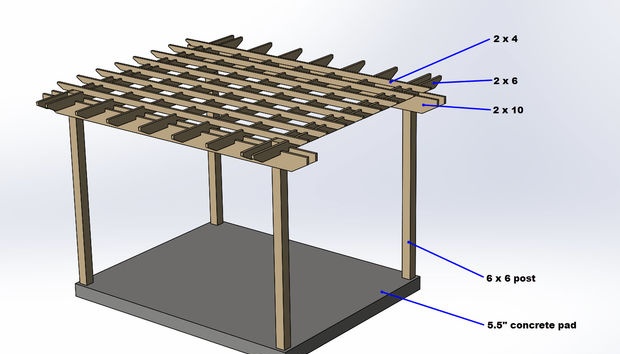

In large projects, planning ahead is the most important step. Construction gazebos are no exception. We spent many hours thinking about exactly what we wanted in the patio, including the type of furniture and how it would be arranged. As it turned out, these decisions influenced the final size and shape of the gazebo.
We decided to put in an outdoor sectional sofa that can seat six or seven people. Having the dimensions of the sofa, we could make some sketches to determine how much space in the gazebo would be needed in width and depth, in case we needed to add a few more chairs. We determined that the 3.2 x 4 m size would provide the space we needed without being too cramped.
Next we started designing the gazebo itself. There were many options and we spent some time finding/changing a design that would be structurally sound without being overly dressy. I modeled the design in a computer-aided design system, but this could easily have been done using graph paper.
Preparation for concreting


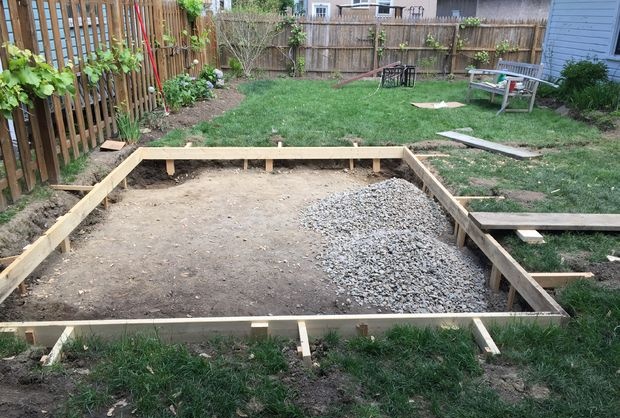
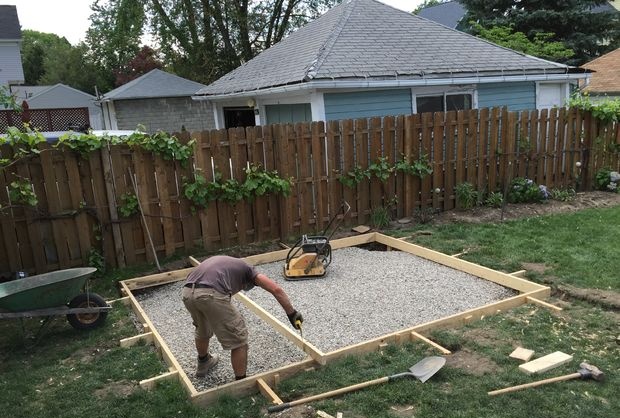
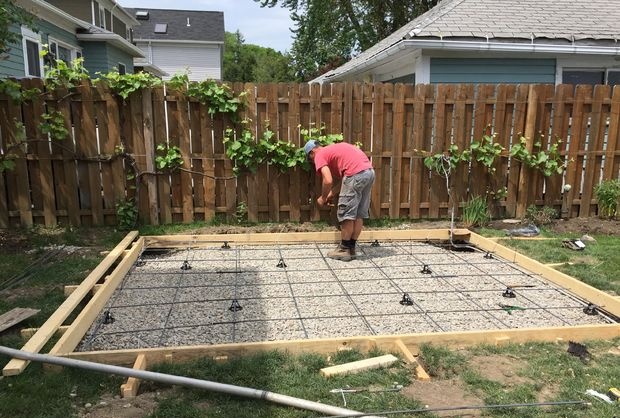



I started by marking out the area for concreting using stakes and cords. I placed the stakes so that they were about 30 cm from the corners on the outside. By doing this, I could remove the primer without worrying about cords. It is important to ensure that the perimeter is square by measuring its diagonals. You also need to level the cords. I did this using a regular level, but it would be easier to work with a laser level.
I then removed about 30cm of soil from the entire area. This gave me space for 18cm of crushed stone and 12cm of concrete. After removing excess soil, I installed formwork around the perimeter. It was made of boards measuring 5 x 15 cm. I leveled them in height and positioned them perpendicular to the surface of the earth. I wanted the site to have a 3-centimeter slope; to achieve this, one side of the formwork had to be lowered down by this amount. The formwork was fixed with screws on 2.5 x 5 cm pegs, which I drove into the ground.
To supply the gazebo with electricity, it was necessary to dig a narrow ditch from its edge to my garage. The depth of the ditch varied from 45 to 60 cm. I ran a cable channel with a cable with a diameter of 2 mm from the garage along the edge of the site and brought it out in the place where one of the pillars of the gazebo should stand.
Having completed the ditch, I filled the area with crushed stone. It is important that the crushed stone is laid level; this is the only way to form a uniform slab. With the exception of the corners, where there will be pillars on which the main weight will rest. Here I made a recess to make 15 cm of crushed stone and increase the concrete layer by 3 cm.
Finally, we install the reinforcing bar. It can be secured using special clamps. My reinforcement was 6 cm above the crushed stone.The space between the rods was 45 cm, and they were rounded at the corners. Additionally, before pouring, I strengthened the reinforcement with clamps.
Pouring cement
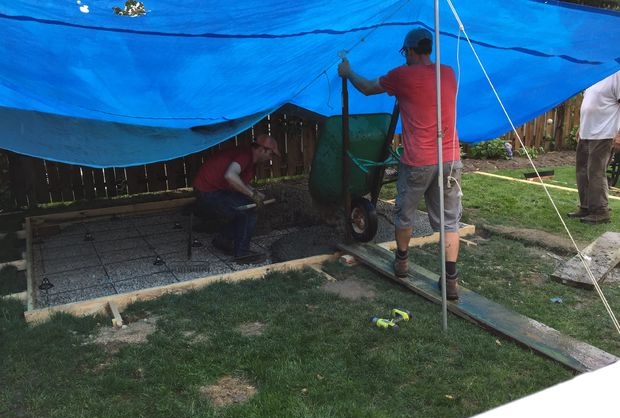
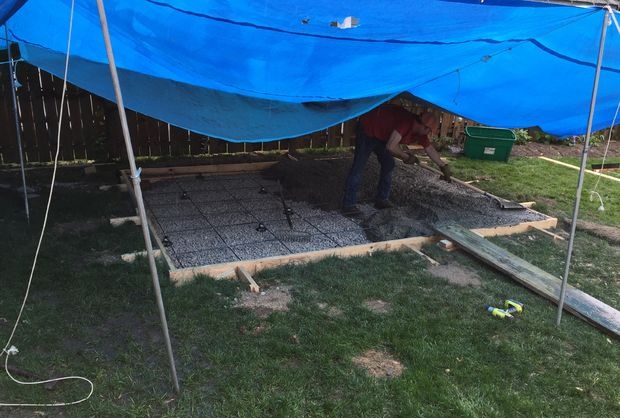
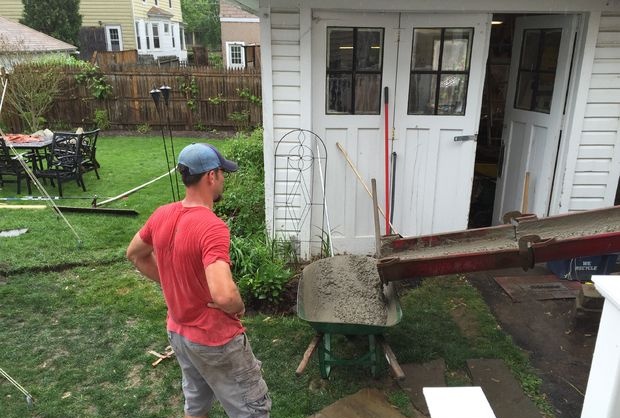
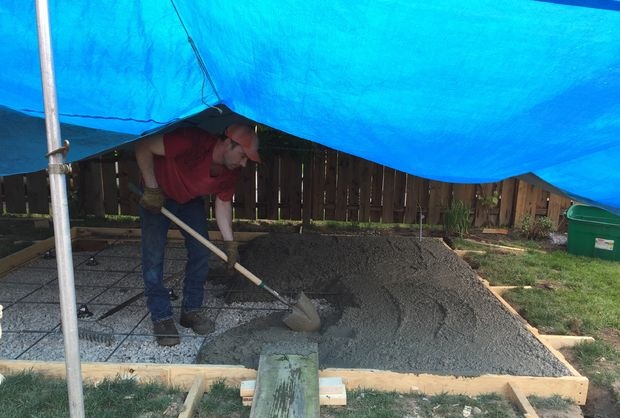
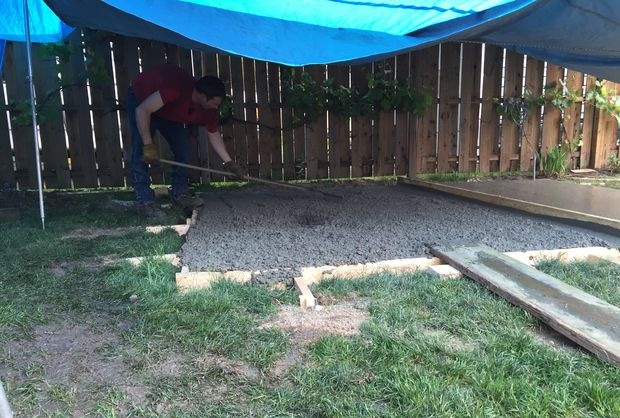



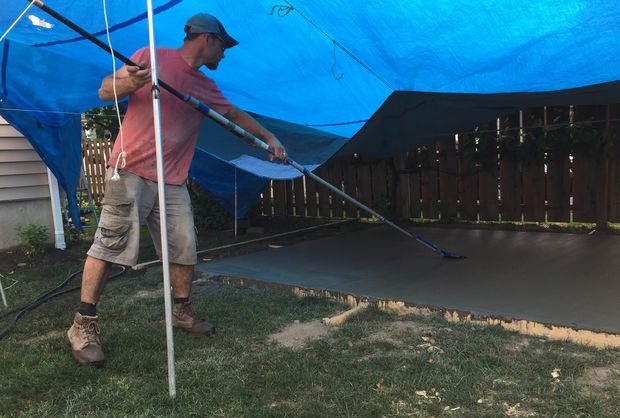
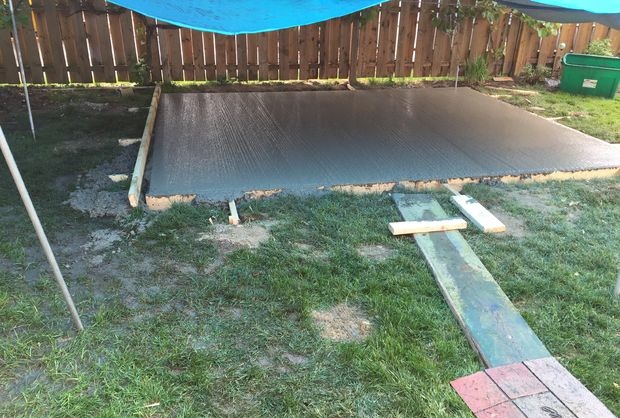
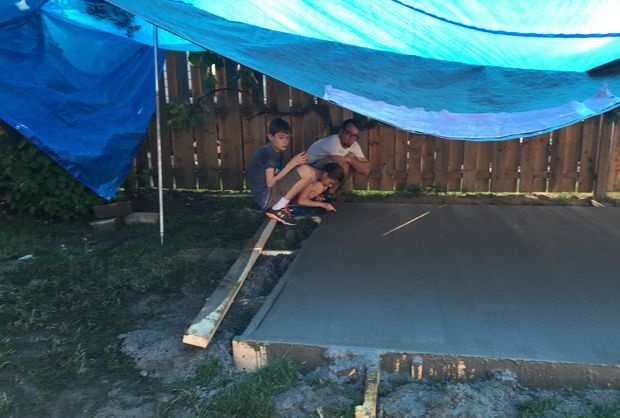
This was definitely the most hectic phase. Because the mistakes made will not be easy to correct later. However, after doing a little research and watching a couple of videos on Youtube, I became confident that it was time to get started.
I calculated the volume of concrete mixture I needed. You can prepare it yourself, but I settled on the option of having it delivered. If you order a ready-mix, you will be asked questions about the technical qualities of the concrete you need. I explained the specifics of my project to the company consultant, and he helped me resolve this issue.
The concrete mixer truck was unable to drive close to the site. Therefore, the solution had to be transported using a wheelbarrow. We started at one end and gradually moved to the other. We then leveled the surface with a rake to a distance of about 50 cm from the edges and then using a long board 5 x 10 cm we leveled the entire surface. This technique makes the concrete surface smooth.
After that we worked with ironing irons. A trowel is a tool that pushes small stones from the surface into the depths, making the concrete surface without flaws. Since the site is located on the street, and when wet it should not become slippery, the surface had to be roughened. We did this using a regular broom (with a long handle). Once the surface had hardened enough to withstand the spray of water from the hose, I wet the area and covered it with plastic for a couple of days. This technique slows down drying, but it will make the area stronger.
I was lucky that my father and brother helped me with this.Both had worked with concrete before, which was important given the limited time they had to work with it. At this important stage, I recommend that you invite someone knowledgeable to help.
Construction of a gazebo
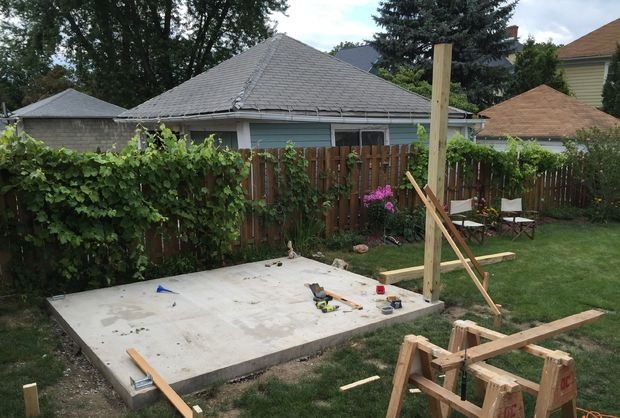

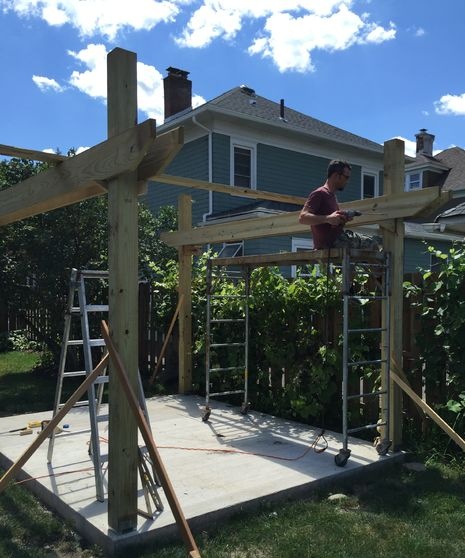
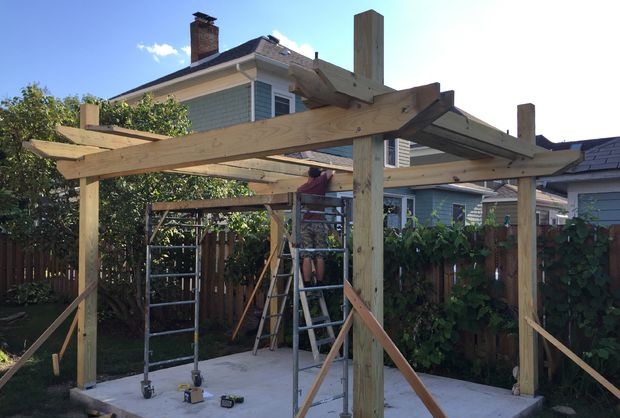
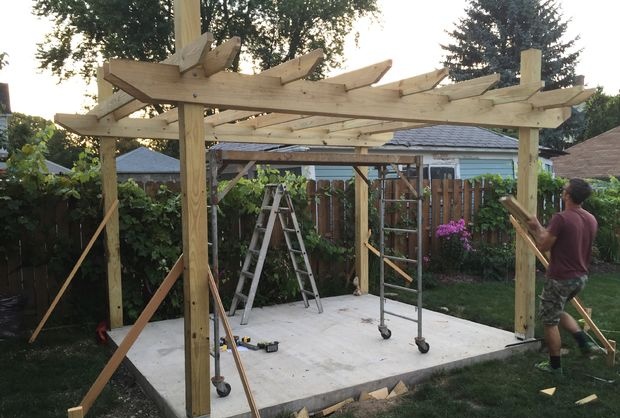
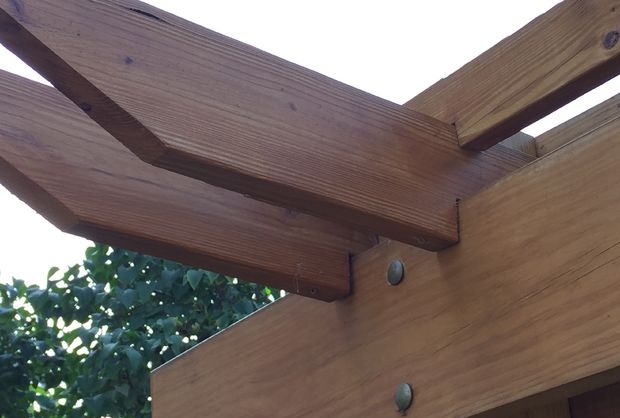
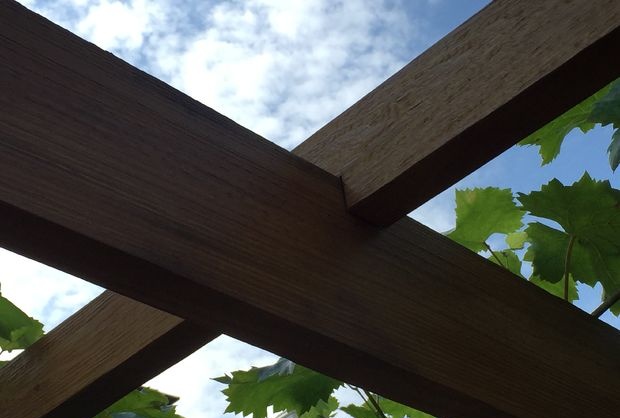
Up until this point, a lot of time and money (and sweat) had been spent on just the concrete pad. I was ready to start construction.
I started by installing galvanized bottom posts at the four corners of the site (5cm from each edge) using concrete anchors. One by one, the pillars fell into place. The metal base was screwed to the galvanized base of the posts. After this, the pillars were leveled and temporarily fixed using boards and stakes.
Next, I bolted two 5 x 25 cm load-bearing boards between the front and rear posts. Before doing this, I first secured them with screws, and then drilled holes for the bolts. I also screwed cross beams between the posts, on which I placed 5 x 25 cm boards before fixing them. These cross beams were later removed.
Then 2 x 15 cm boards were installed, which ran from the front to the back. These boards make up the first layer of the "lattice". Before installing them on the supporting elements, the boards were cut to length and grooves were sawn at the end. They are made in such a way that the cross board fits 5 cm onto the carrier. I have seen options where the board simply lies on the carrier, but with the help of grooves the look is more neat and the likelihood of deformation is reduced. I marked the location of the grooves on the boards so the work could be done on the ground. I made the cuts using a miter saw. The process is very tedious, but the result is worth it. I additionally secured the boards to the supporting boards by screwing screws on top.
Finally, a similar process was required for the second row of boards. For these purposes, I used boards measuring 5 x 10 cm, making grooves in them and securing them with screws after installation.
Finishing touches

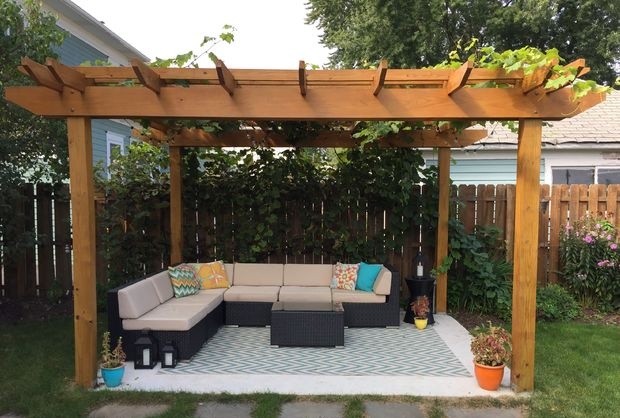
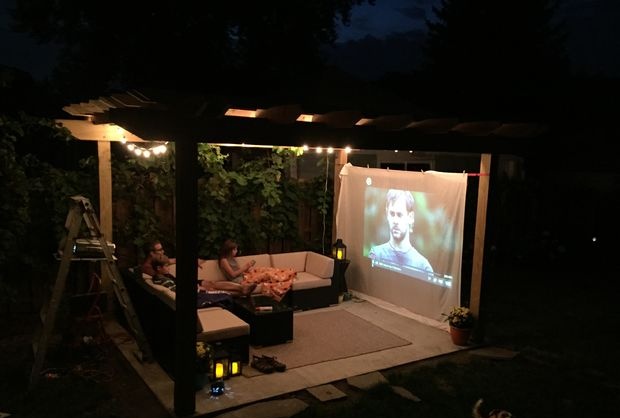
With a few improvements, a gazebo can be transformed into an attractive outdoor hangout. The more attractive it is, the more you will use it.
- Hanging lamps. It is necessary. They have a nice, warm glow that looks great at night.
- High quality outdoor furniture. It will be exposed to rain, sun rays, dirty dog paws... If you can afford it, then buy furniture with high-quality fabric that will retain its original appearance for a long time.
- Carpet. It will help create the feeling that you are indoors. It is better to buy material that dries quickly.
- Night cinema. We hung a large sheet on one side and placed a projector on the other. Great for parties or family movie watching.
- Grape or climbing plant. We planted grapes near our gazebo. I began to adapt it so that it grew towards the top and later provided good protection from direct sunlight.
- Curtains. We haven't added them yet, but we'll probably do so soon. Our gazebo faces east, so it gets too much sun in the morning. There are many options on the Internet where people use shower curtains or simple fabric to solve a similar problem.
I hope this tutorial gets you thinking about how to use your yard and gives you the confidence to build your own gazebo.
Original article in English
